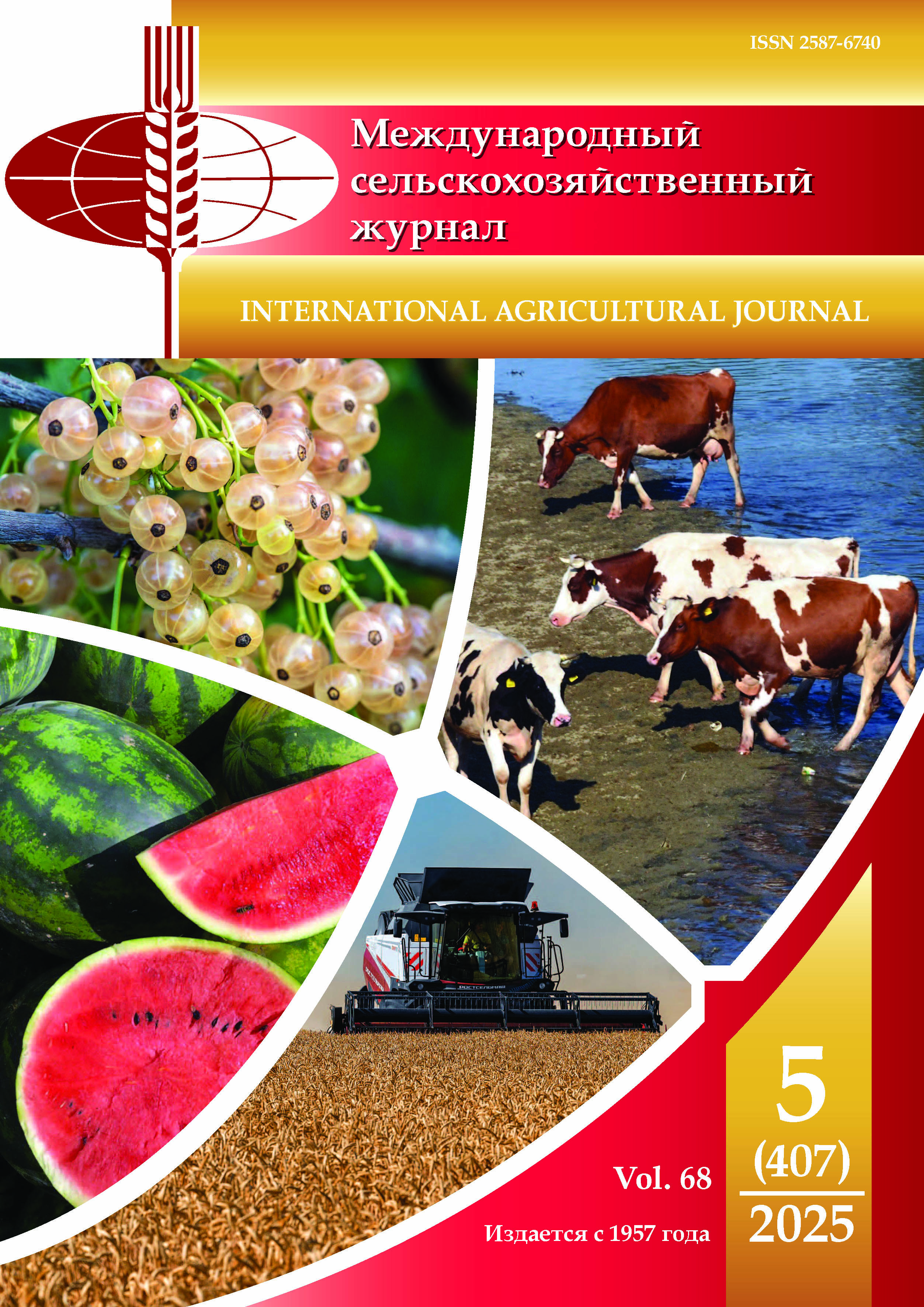UDC 631.811.982
The article presents data on the study of various doses of melatonin in seed treatment. Studies aimed at establishing the optimal concentration of phytomelatonin solutions (FMEL) for pre-sowing seed treatment, as well as studying their effect on seed germination and the intensity of their germination were carried out in the laboratory for testing elements of agricultural technologies, agrochemicals and plant pesticides of the All-Russian Research Institute of Agrochemistry named after D.N. Pryanishnikov and in the Ulyanovsk district, Ulyanovsk region, which is part of the forest-steppe zone of the Middle Volga region in 2021-2023. The studies were carried out in two pools of laboratory experiments. In a laboratory experiment, it was found that melatonin increases the amount and stability of photosynthetic pigments and improves their efficiency. The positive effect of melatonin was somewhat inhibited against the background of moisture deficiency when biochemical processes died down, increasing after moisture was restored. Seed treatment with phytomelatonin on average for 3 years in arid conditions of the Middle Volga region at doses of 0.1; 0.01 and 0.001% ensured yields from 2.8 to 2.89 t/ha or 6-10% higher than the control. The most effective was the use of phytomelatonin at a dose of 0.1%, which allowed for a yield increase of 0.26 t/ha or 10% (in the control 2.63 t/ha).
melatonin, spring wheat, concentration, germination, yield, quality
1. Zheng, X. et al. (2017). Chloroplastic biosynthesis of melatonin and its involvement in protection of plants from salt stress. Scientific Reports, vol. 7, no. 1, p. 41236.
2. Varghese, N. et al. (2019). Melatonin Positively Influences the Photosynthetic Machinery and Antioxidant System of Avena sativa during Salinity Stress. Plants, vol. 8, no. 12.
3. Szafrańska, K., Reiter, R.J., Posmyk, M.M. (2017). Melatonin Improves the Photosynthetic Apparatus in Pea Leaves Stressed by Paraquat via Chlorophyll Breakdown Regulation and Its Accelerated de novo Synthesis. Frontiers in Plant Science, vol. 8, p. 878.
4. Zhao, D. et al. (2019). Melatonin synthesis and function: Evolutionary history in animals and plants. Frontiers in Endocrinology, vol. 10, no. APR.
5. Hernandez-Ruiz, J., Cano, A., Arnao, M.B. (2004). Melatonin: a growth-stimulating compound present in lupin tissues. Planta, vol. 220, no. 1, pp. 140-144.
6. Shibaeva T.G., Markovskaya E.F., Mamaev A.V. Fitomelatonin: obzor // Zhurnal obschey biologii. 2017. T. 78. № 5. S. 46-62.
7. Arnao, M.B., Hernandez-Ruiz, J. (2006). The physiological function of melatonin in plants. Plant Signal. Behav., vol. 1, no. 3, pp. 89-95.









